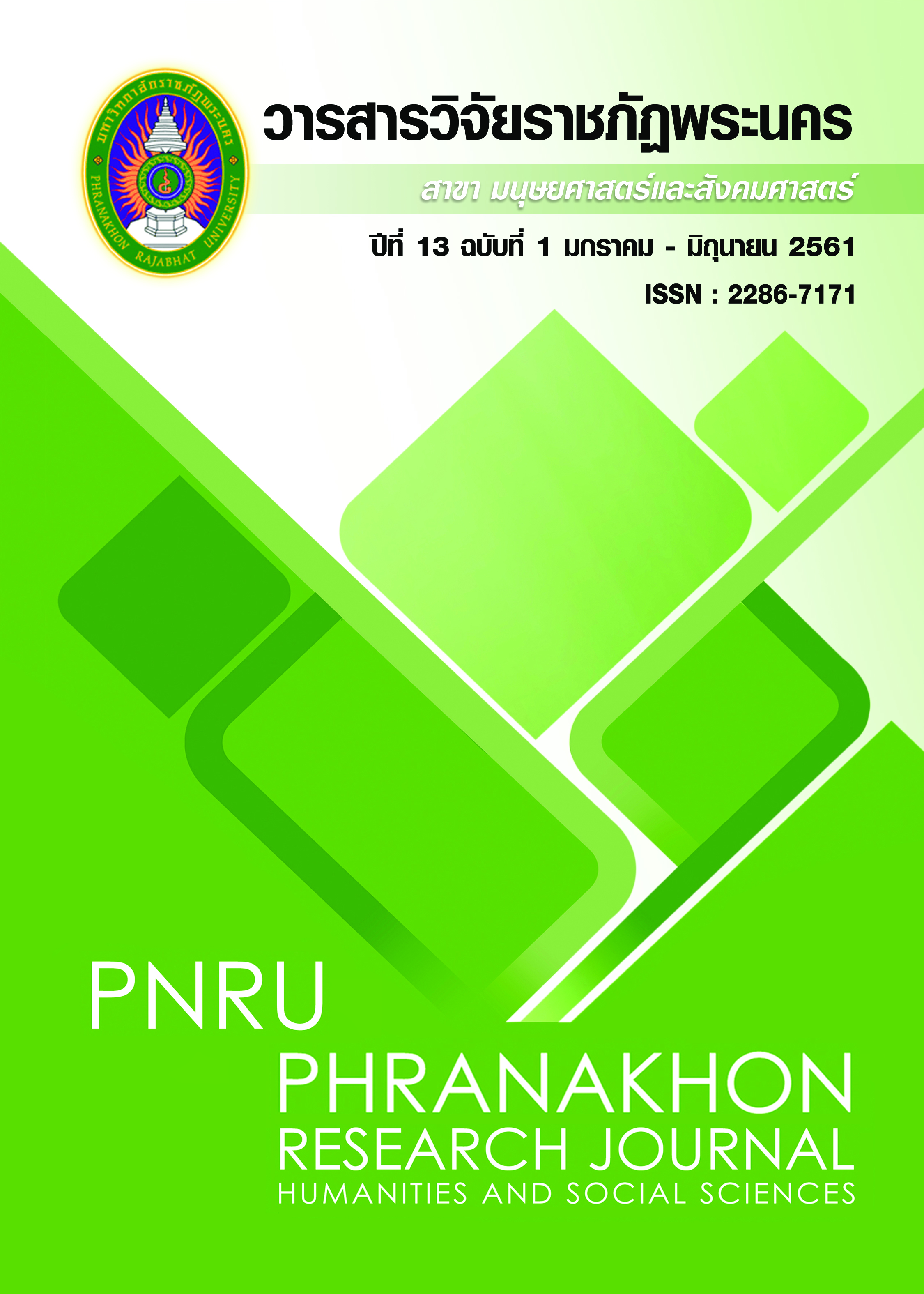การแบ่งกลุ่มผู้บริโภคสินค้าที่เป็นมิตรกับสิ่งแวดล้อมในแนวทางของการรับรู้คุณค่าต่อสิ่งแวดล้อม
Main Article Content
Abstract
The research aims to extract the demographic features of environmental-friendly consumption behavior. The study sample was 342 people with aged 20 years or over in Bangkok metropolitan area. The questionnaire was conducted to measure environmental issues of three perceived values: (1) symbolic image (2) functional image as product usage and (3) emotional value caused by perceptions of environmentally friendly purchase such as happiness and being praised. Consumer segmentation was based on environmentally-friendly buying behavior by using K-Mean technique and then the characteristics of each consumer segment were extracted using ID Tree. Man Whitney was used to test the different level of three perceived eco-friendly
products valued aspect: characteristics of each consumer segment were extracted using ID Tree. Man Whitney was used to test the different level of three perceived eco-friendly products valued aspect: symbolic, functional and emotional value. The analysis has found that consumers can be divided into 2 groups: active and non-active of environmentally friendly products. With ID Tree technique, there are 14 rules for classifying the demographic characteristics of each group and the active group was highly significant level (1%) on the eco-friendly products’ value.
Article Details
Each publish articles were copyright by Phranakorn Rajabhat University
Any contents which appeared in each articles in the journal were authors personal opinion. It did not relate to Phranakorn Rajabhat University and other instructors in the university. Each authors would take responsibility on their articles. If there are any mistake, the authors will take responsibility themselves
References
Brown, J.J., Rerngero, P.H., (1997). Social ties and word-of-mouth referral behavior. Journal of Consumer Research,
14, 350-360.
Bruner, G. C., Hensel, P. J., & James, K. E. (2005). Marketing scales handbook. A compilation of multi-item measures
for consumer behavior and advertising. Vol. IV., Chicago IL: Thomson SouthWestern.
Coddington, W. (1993). How to green up your marketing mix. Advertising Age, 61(September 3), 30-43.
Ginsberg, J. M. and P. N. Bloom, (2004). Choosing the right green marketing strategy. MIT Sloan Management Journal, 79–84.
Jansson, A., Marell, A., Nordlund A. (2011). an exploring consumer adoption of a high Involvement eco-innovation
using value-belief-norm theory. J. Consum. Behav, 10, 51–60.
Keller, K.L., (1998). Strategic Brand Management Building, Mi asuring, and Managing Brand Egeity. AE: Prentice
Hall. 29.
Keller, K.L., (2003). Strategic brand management: building veasuring and managing brand equity, NJ: Pearson
Prentice Hall.
Kotler, P., (2000). Marketing management, 11th edition. Upper Saddle River, NJ: Prentice Hall.
Lee, K. (2012). The green purchase behavior of Hong Kong young consumers, Journal of international consumer
marketing, 23, 21–44.
Ministry of Natural Resources and Environment. (2014). Thailand state of pollution report. Bangkok: Pollution Control
Department. (In Thai)
Ottaman, J.A. (2006). Green marketing: challenges and opportunities for the new marketing age. Lin col n
wood: NTC Business Books.
Peattie, Ken, Crane, A., (2005). Green marketing:legend, myth, farce or prophesy?. Qualitative Market Research:An International Journal, 8(4), 357-370.
Roberts, J. A. (1996). Green consumers in the 1990s. Journal of Business Research, 1996, 36(3), 217-231.
Roper, AS. (2002). Green gauge report 2002. NY: Roper ASW.
Rokka, J. & Uusitalo L. (2008). Preference for green packaging in consumer product choices – Do consumers care?,
International Journal of Consumer Studies, ISSN 1470-6423.
Soneryd, L., Ylva U. (2015). Green governmen tality and responsibilization, Journal Environmental Politics, 24, 2015 -
Issue 6.
Vlieger L.., Hudders L. & Gino V.e. (2012). The impact of green appeals on credibility: a mixed-method approach, 11th International conference on Research in Advertising (ICORIA 2012) : The changing role of advertising.


